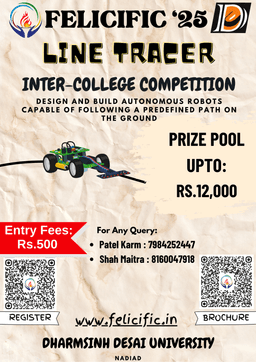
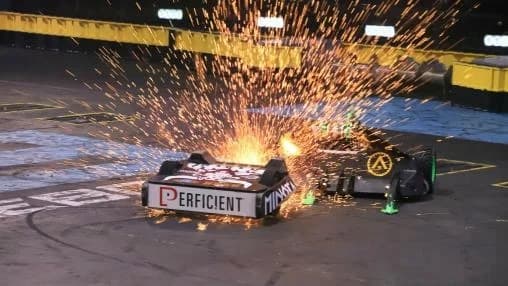

Robo Ninja
Problem Statement
Design and build a remotely controlled robot capable of competing in a Robo War event. The robot must be wirelessly capable of engaging in head-to-head combat within a controlled arena.
Objective:
Using effective strategies to immobilise or throw out opponents from arena. The robot should demonstrate agility, durability, and precision, utilizing weapons and mechanisms designed to withstand attacks and dominate the battle. Safety, innovation, and effective use of technology are key aspects that must be incorporated into the design. .
Event Description:
● Step into the Cage of Destruction, where legends are made! Will your bot rise to glory and showcase its power? In this thrilling Robo War event, every participant has a chance to shine and prove their strength! ● Robo-Ninja is the ultimate test of creativity, engineering, and brute force, where your self-built robots will engage in a high-octane battle inside a confined arena. the fight will continue until one robot overpowers or ejects the other from the ring. ● Also expect some surprise fun events and more surprising stuff waiting for your bot in the cage.
Team Specifications:
- Maximum 5 participants per team
- All team members must be enrolled from the same college.
- Unique team names are required.
- Each team must designate a representative for communication.
Bot Specifications:
● 1. Design Specifications:
o Weight Class ▪ The weight of the robot should not be more than 10kgs.
o Dimensions (LBH) o The robot should fit in a box of following dimensions: 50cm : 50cm : 50cm. o "Cluster Bot" formations are allowed, provided each bot and the combined formation meet the weight and dimension requirements. o Pneumatic, hydraulic mechanisms, and electric lifters are NOT allowed. o Both active (weapon-based) and passive (wedge-type) bots are allowed, with preference given to active bots during abstract selection. o A tolerance of 5% will be allowed for weight and dimensions of the robot. ● Mobility: All robots must exhibit easily visible and controlled mobility. • Allowed Mobility Methods • Rolling (wheels, tracks, or whole-robot rolling). • Non-wheeled: Robots without rolling elements in contact with the floor and no continuous rolling or cam-operated motion in contact with the floor, either directly or via a linkage. Linear-actuated legs and novel non-wheeled drive systems are included. • Manually operated jumping and hopping (maximum height: 6ft). Teams are responsible for any damage caused by this mechanism.
• Disallowed Mobility Methods • Flying (airfoils, helium balloons, ornithopters, etc.). • Securing to the arena surface (suction cups, diaphragms, sticky treads, glue, etc.). ● Robot Control Requirements
- Wireless remote control only; all power supplies must be onboard.
- Complete control over all functions and positions. Autonomous functions are acceptable but must be remotely disabled/overridden at any time. A manual emergency stop (E-stop) function controlled from the remote.
- Transmitter-receiver binding capability is required, with reliable connection through acrylic (20mm), metal bars, and barriers.
- Toy-grade or market-available remote-control systems are permitted. Nonstandard/self-made systems require organizer approval.
- Wireless remote pairing must be completed before arena entry.
• Battery and Power
- Electric power only; IC engines are prohibited. Onboard batteries must be sealed, immobilized-electrolyte types (gel cells, lithium, NiCad, NiMH, or dry cells).
- Maximum voltage: 36V DC.
- Battery terminals must be protected from short circuits.
- Damaged/leaking batteries will result in disqualification.
- Insufficient battery protection will lead to immediate disqualification.
- Battery changes are not allowed during matches.
- Only bots with onboard batteries are allowed.
- Using the same bot with different names by modifying components is prohibited.
- Battery supply to weapons and power systems must include: a. A manual disconnect switch accessible without risk to the operator. b. A manual emergency stop triggered via the remote controller.
- Teams are advised to have a spare charged battery. Failure to appear at the allotted time will result in disqualification. Weapon Systems
- Allowed weapons: Magnetic weapons, cutters, flippers, saws, lifting devices, spinning hammers, etc.
- Prohibited weapons: a. Liquid projectiles (foam, liquefied gases). b. Flammable liquids. c. Weapons causing invisible damage (electrical weapons, RF jamming, etc.). d. Weapons that entangle opponent spinners (chains, ropes, loose fabrics).
- Spinning weapons: Must stop within 60 seconds of power removal using a self-contained braking system.
- Spring-loaded/flywheels: Springs must not be loaded outside the arena/testing area. All such devices must fail to a safe position on loss of radio contact/power.
Track Specifications:
- .Arena Dimensions: ○ The arena measures 12 ft x 12 ft x 8 ft (l x b x h), providing ample space for high-intensity robot combat.
- Arena Material: ○ The arena features a metal sheet base for durability and stability during high-impact clashes.
- Safety Measures: ○ A protective acrylic sheet surrounds the arena to safely contain the robots and ensure the safety of participants and spectators. ○ The arena is equipped with a gate for robot entry and exit, with a covered top for added safety
Gameplay
-
- Opponent immobilization.
- Immobility defined as the inability to demonstrate 5 inches of linear motion in 10 seconds.
- Unsafe robots will be disqualified.
- Being thrown out of the arena results in an automatic loss.
- Pinning/lifting is limited to 10 seconds. Failure to release will result in disqualification. Entangled robots will be separated by organizers.
- Robots stuck due to arena deformity will be subject to the immobilization countdown.
- Points are awarded for aggression, control, and damage. • Aggression: Frequency, severity, boldness, and effectiveness of deliberate attacks. • Control: Ability to attack weaknesses, effective weapon use, and minimizing damage received. • Damage: Reduction of opponent functionality, effectiveness, or defensibility through deliberate action. Note: Winning a round does not guarantee advancement. Judges can disqualify robots. All judge decisions are final. Match Duration and Type: 5-minute matches, excluding revival time. • Match Types: o Match: 1-on-1 combat. Match Frequency: 20-minute preparation time between matches. Failure to return on time may result in forfeiture.
Tie-breaker Criteria
- Number of human interventions.
- Number of penalties.
- Time taken to complete the track.
General Rules:
- Compliance with all rules is mandatory.
- Onboard batteries and pneumatics must be protected.
- Robots must only be activated in designated areas.
- Participants operate robots at their own risk.
- Unauthorized activity that may damage the surroundings is prohibited.
- Organizers' resources must be used with consent.
- No team members can enter the arena once robots are inside.
Event Committee Members
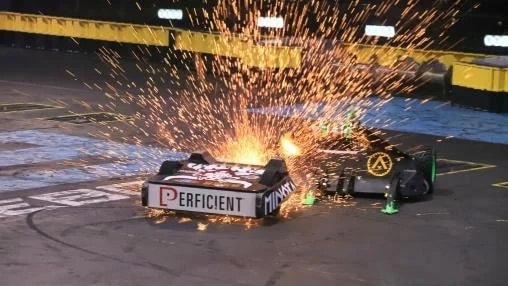
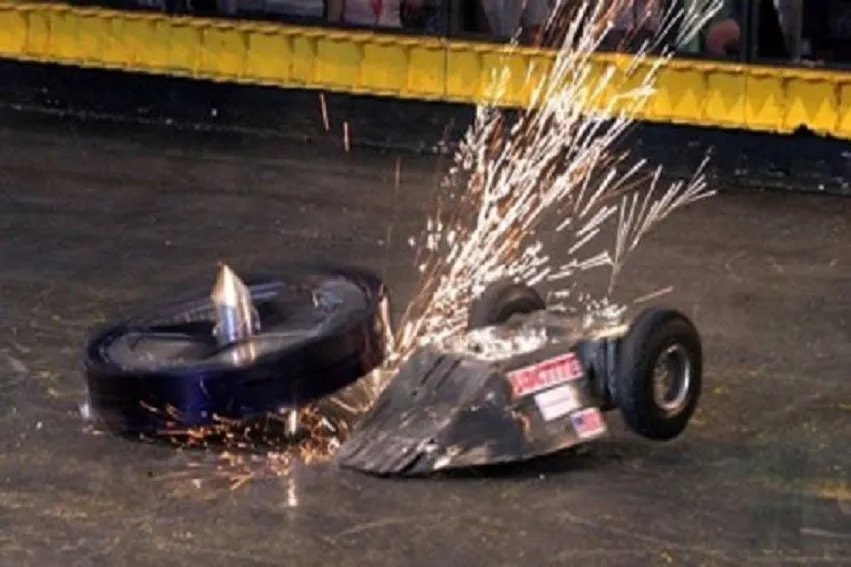
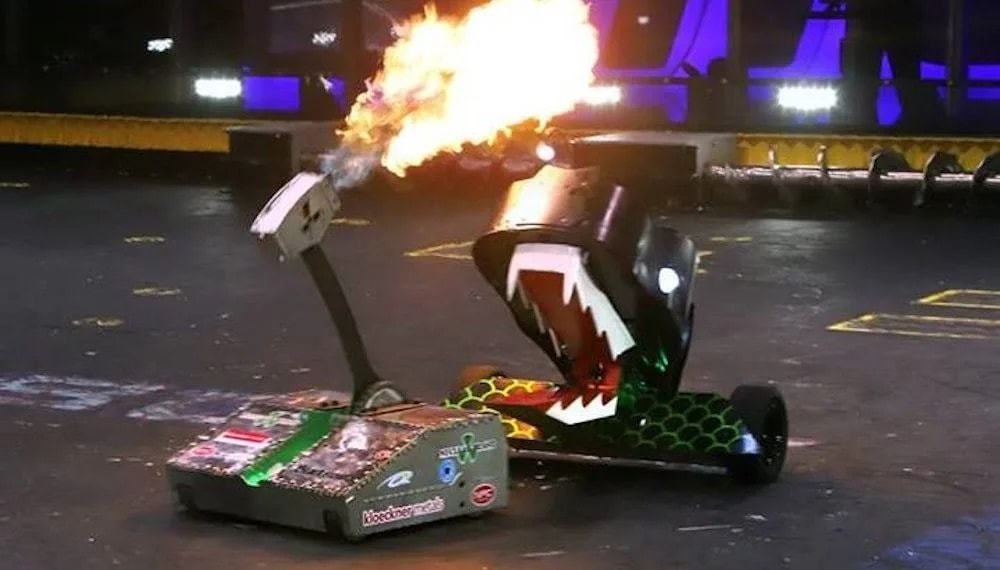
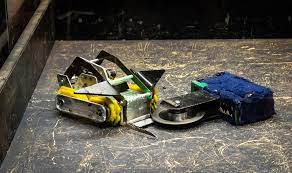
Suggested Posts
All PostsAllAll PostsAll
